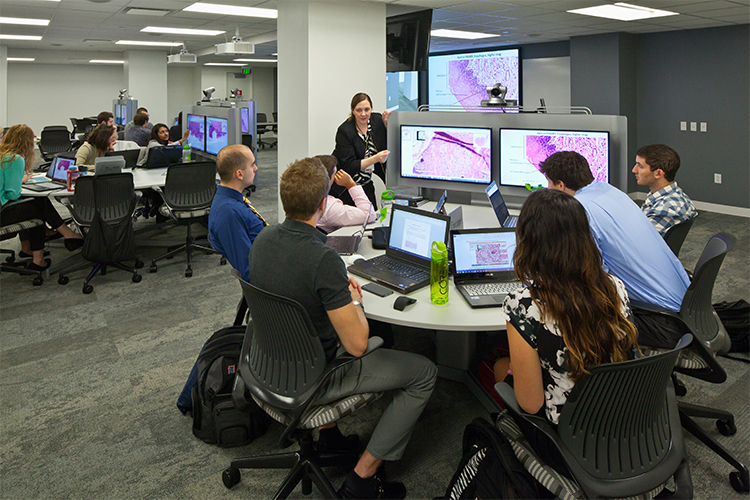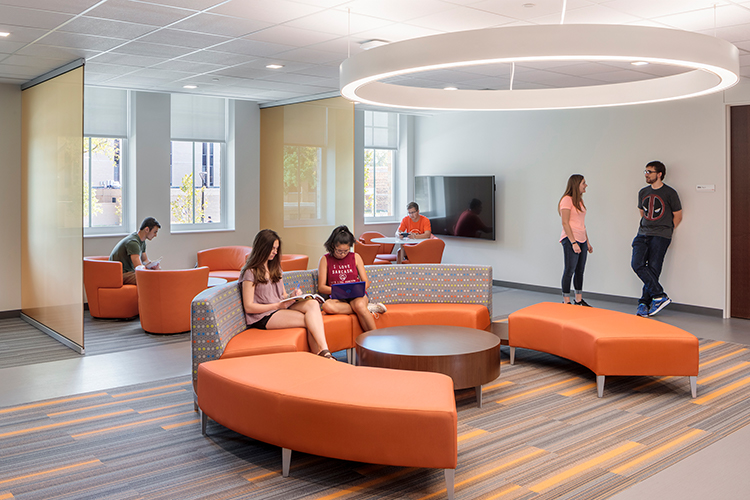I spend a lot of time on college campuses...
Or, at least, I did up until mid-March when colleges and universities closed campus during this global pandemic. As someone who works with dozens of universities across the country, I have been asked and been asking 2 primary questions in the past month and a half:
- “What’s happening in higher education?”
- “How will education change?”
The answer is and will continue to be wildly-specific depending on the institution, as there are about a million micro-to-macro variables that might determine how a university could be feeling the impact right now. There are, however, some commonalities between what all colleges and universities are experiencing. Here’s what is happening everywhere right now:
Students Sent Home
Different states had different deadlines for “shutting down”, so some institutions had more time than others to create a plan for students to collect their belongings from their dorm rooms before heading home to mom & dad’s house. Most colleges we able to provide students a “move-out” date and resources/timeslots to be able to effectively pack up shop. Some, however, had no time at all. Students at Swarthmore College in Eastern Pennsylvania, for example, left for Spring Break only to be told: “You are not allowed to come back.” Facilities staff at Swarthmore then had to “scrub” the buildings for perishable food left in refrigerators and necessary medications that students needed.
Not everyone elected to grab their belongings, however. Some students and their parents contacted the respective housing departments and said “Just throw it all out, we’ll replace it all.” This caused yet another logistical issue for facilities and residence life staff.

Some Students Remain on Campus
Most residence halls – big money makers for institutions – are now sitting vacant. I say most because some students can’t go home. Many international students cannot leave the country due to travel restrictions in their countries of origin. Others still do not have homes elsewhere. The result? Every university had to develop policies/criteria for certain students to be allowed to remain on campus. At The Ohio State University, for example, the total number of students remaining on campus is around 1,000 (more than can fit in any one building, especially considering that these students are all in private rooms to limit personal contact). 50 short miles away at Cedarville University – with about 4,000 total students – the number remaining on campus is closer to 40, with about half of those being nursing students who are wrapping up clinical rotations.
Food is Essential
Students remaining in residence halls means students who need dining options. Therefore, every institution has modified at least one dining operation to provide a grab-n-go / carryout option for their students and staff. This pandemic also has many institutions rethinking how they might permanently modify dining options to serve food once the students come back to school. Think about it: how important is that sneeze guard now at the food court?

At School, At Home
Students still have to finish out the semester, and most faculty have adapted to teaching online. While you’d be hard-pressed to find a college that didn’t offer online content before the pandemic, I.T. staff at institutions are feeling the burden of bringing everyone up to speed to minimize downtime and maximize 1-on-1 virtual contact hours with students. While Millennials might be fine with the shift, not every faculty member was ready to switch to a digital platform. This change, while good, has been more painful for some than others.
One program that has weathered the online learning particularly well is Ohio University’s Heritage College of Osteopathic Medicine (HCOM). HCOM has 3 campuses in Athens, Cleveland, and Dublin, Ohio. Faculty in Athens routinely teach students in Cleveland, and so on. What has been a key factor to their success? A robust, integrated I.T. department WITHIN THE COLLEGE that has a seat and a voice at the head table, and whose budget for installation and maintenance of audio/visual resources is protected in capital projects. We will likely see more of this model in academic departments moving forward.

"Graduating" Early
Health-science related programs like Ohio State University’s College of Medicine have been offering students early diplomas (provided they had already completed the requirements of their degree) to allow them to enter the work force to help fight the pandemic. Students are “graduating” from their living rooms; not getting closure on an academic career and that last tie to bind them to their alma-mater.
Heroes
Healthcare professionals and staff have become celebrated as heroes, and rightfully so. There is another set of heroes on college campuses these days, and they’re the ones in charge of keeping facilities, operations, and technology up and running. Who do you think is doing the “deep cleaning” in all of the buildings on campuses across the country? Custodial staff are THE essential front-line staff on campus today. Hybrid solutions to maintenance tickets and work orders have been implemented across the country. Personal and/or university vehicles have become make-shift private offices for staff. Maintenance staff can access work orders over phones or tablets and execute those orders in surgical in-and-out procedures in buildings.
Losing Money
As mentioned above: students aren’t paying rent at residence halls. At yet other institutions, tuitions are being refunded. At others, parents who have lost their jobs during this pandemic have been asking for more financial aid to be able to send their son or daughter to school. The exact economic impact at every school varies wildly, but they are all feeling a significant reduction in income.
Furthermore: there is no guarantee that the students will be back: many institutions are already predicting a 25% enrollment dip this Fall. The uncertainty of the timing, pace, scale, and degree of a “return to normal” has caused universities to create layers upon layers of contingency plans: “What if all the students do come back?”; “What if nobody comes back?”; “What if they all come back, but want private dorm rooms?”. All good questions. All require planning. All will remain to be answered in the months to come. And all institutions are delaying making that decision as long as they can so as to make the most informed decision possible.
Okay, so I’ve answered the first question....
What about the second? How will education change? What can institutions do to prepare themselves for the future? Here are some thoughts:
Be Ready
While most contractors are still busy now, the current economic climate is creating a small “bubble” in some construction markets. Institutions that have “shovel-ready” projects when the snow melts next year will be better suited to capitalize on a workforce that needs to stay busy.
Technology, Flexibility, and Utilization
I’ve said this for a few years now: If you’re designing a classroom without a camera in it, you’re doing it wrong. And it’s not just about classrooms. Connectivity and 2-way communication must be ubiquitous on campus. In the hallway. Outside. In your bedroom. At the café. Everywhere. Institutions should be looking at ways to study utilization of spaces and provide more quality and less quantity. More technology-rich environments. Fewer walls & doors.
Bowling Green State University set out years ago to actually reduce the amount of academic space on campus, and make the spaces that they had better, more saturated with technology, and more flexible to accommodate different modes of learning. As a result, they are light-years more prepared to adapt in the future than they would have been had this pandemic hit us in 2010.

Document Everything
Record your plans. Many institutions and businesses were caught unprepared for this pandemic. The plans and policies that are being developed at colleges and universities across the country should be documented and codified so that memory of what to do is not lost with personnel changes. These plans should also be updated, reviewed, and assessed periodically to ensure best practices in the future.
Talk to Each Other
Peer-to-peer. Friend-to-friend. College-to-college. You can always learn more. You can always get better. Organizations like the Society for College and University Planning (SCUP), Leadership in Educational Facilities (APPA), and the Association of American Colleges & Universities (AAC&U) are leading the charge in providing content and resources for people “in the trenches” on campus. They offer great resources right now for institutions to share experiences, learn from each other, and hear best practices. Get online. Check them out. Join a town hall meeting. Learn and get better.
Get Ready for Everything
As someone who works all over the country, and who designs everything from medical simulation suites to residence halls, I must be prepared for all manners of how this impacts my clients. I’m optimistic that this pandemic will provide an opportunity for higher education institutions to create better, more flexible, multidisciplinary, technology-rich, and safer environments on campus moving forward.

Ben Niebauer, RA, LEED AP BD+C // Associate Principal, Education Market Leader
Ben leads DesignGroup’s education practice. He has focused his 18 year career on exceptional design and planning for academic facilities. Ben has significant experience designing student centered environments including health science facilities, laboratories, over 5,500 student housing beds, and has assessed and planned 30 million square feet of higher education campuses. Ben is an active participant with the Society of College and University Planners.
